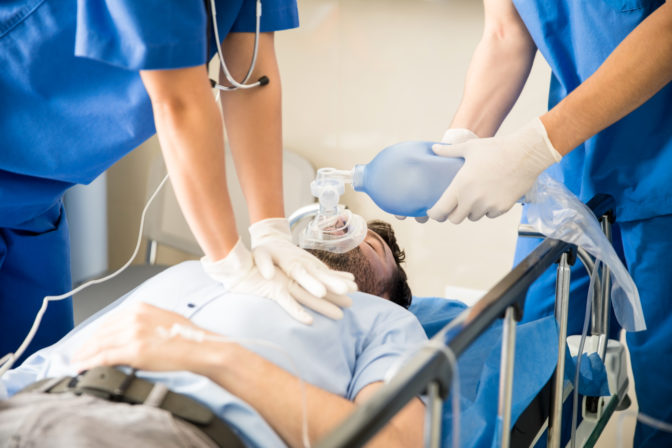Advanced Cardiac Life Support
The Advanced Cardiac Life Support (ACLS) course, is designed for healthcare providers who wish to refresh their knowledge and skills for the purpose of renewing their course completion card. This course builds on the foundational Basic Life Support (BLS) skills, emphasizing the importance of high-quality Cardio Pulmonary Resuscitation (CPR) to patient survival, the integration of ACLS interventions, and the importance of effective team dynamics and communication. This course is offered fully online which enables complete flexibility to participants.
The AHA now maintains the most up-to-date recommendations online at eccguidelines.heart.org. It is recommended that you refer to this website for the most current guidelines to complement the material that is presented in this course.
NOTE: While this course covers BLS basics, it is presumed that all participants taking this course can perform BLS correctly. If you wish to refresh your skills in this area, please refer to our BLS course.
Course Objectives

- List the components of the BLS Primary Survey and ACLS Secondary Survey for adult patients
- Discuss ethical considerations for commencing or suspending resuscitation
- Explain the importance of providing prompt, high-quality BLS, prioritizing early chest compressions and integrating early automated external defibrillator (AED) use
- Recognize respiratory and cardiac arrest and discuss early recognition and management
- Recognize the medications that are utilized in resuscitation
- Recognize the major signs and symptoms of a stroke and discuss why timely action is crucial
- Describe how team dynamics impact the overall team’s performance
- Explain how to operate various pieces of equipment
- Implement the appropriate ACLS algorithms
Section 1: BCLS Review
- Compressions (depth, rate, recoil) with and without ventilation (speak on airway positioning for rescue breathing)
- BCLS with one vs. two providers (switch every 2 minutes)
- AEDs (importance of early defibrillation, pad placement, etc.)
- Chain of Survival (in and out of hospital)
- Causes (H’s and T’s)
Section 2: Airway Management in Respiratory/Cardiac Arrest
- Bag-Valve Mask (BVM) use
- The Oropharyngeal airway (OPA)
- The Nasopharyngeal airway (NPA)
- Advanced Airways (supraglottic, ETTs, changes made in resuscitative measures i.e. 10 breaths/min with continuous compressions
- Capnography
- Suction
Section 3: Cardiac Arrhythmias
- Bradycardia (sinus, blocks i.e. 1st degree, 2nd degree types 1 and 2; 3rd degree and their treatments)
- Tachycardia (stable narrow complex, stable wide, unstable narrow or wide and their treatments)
- Pulseless Rhythms (Ventricular Fibrillation, Ventricular tachycardia, PEA, and their treatments)
- Defibrillation
- Synchronized Cardioversion
- Algorithms
Section 4: Acute Coronary Syndrome
- Identification and Assessment
- Pre-hospital Care (treatment, special considerations i.e. transfer to cardiac center)
- ED Triage, Assessment, and Care
- STEMI vs NSTEMI
- Fibrinolysis and PCI
- Adjunctive Therapies
Section 5: Adult Stroke
- Causes
- Identification and Assessment
- Pre-hospital Care
- ED Triage, Assessment and Care
- Outcomes
Section 6: Post-Resuscitative Care and Ethical Considerations
- Testing (12-lead ECG, ABGs, labs, angiography if ST-elevation and available)
- Monitoring of Vitals (MAP target of 80 mmHg, oxygen saturation >94%, adequate ventilation based on arterial blood gases and capnography)
- Seizure Identification and Treatment
- Considerations (evaluation of prognosis after 72 hours, organ donation for severe brain injury or death)
- Ethical Considerations/Termination of BLS Efforts


